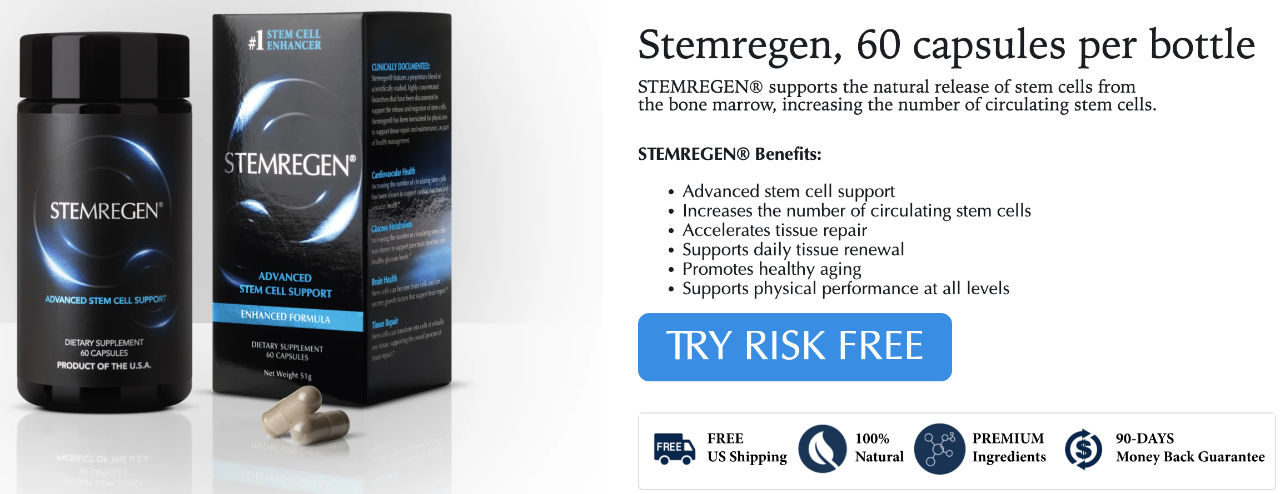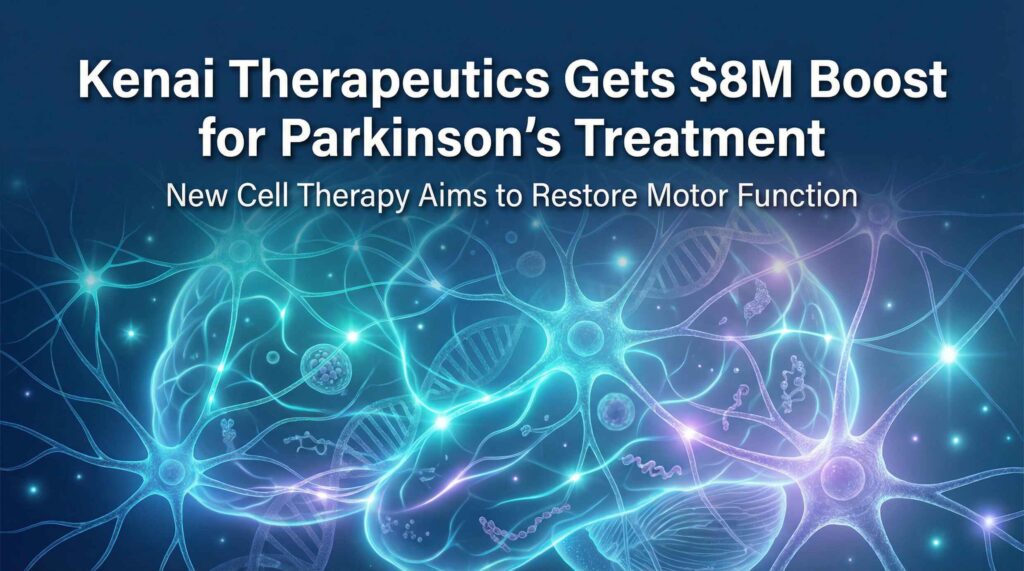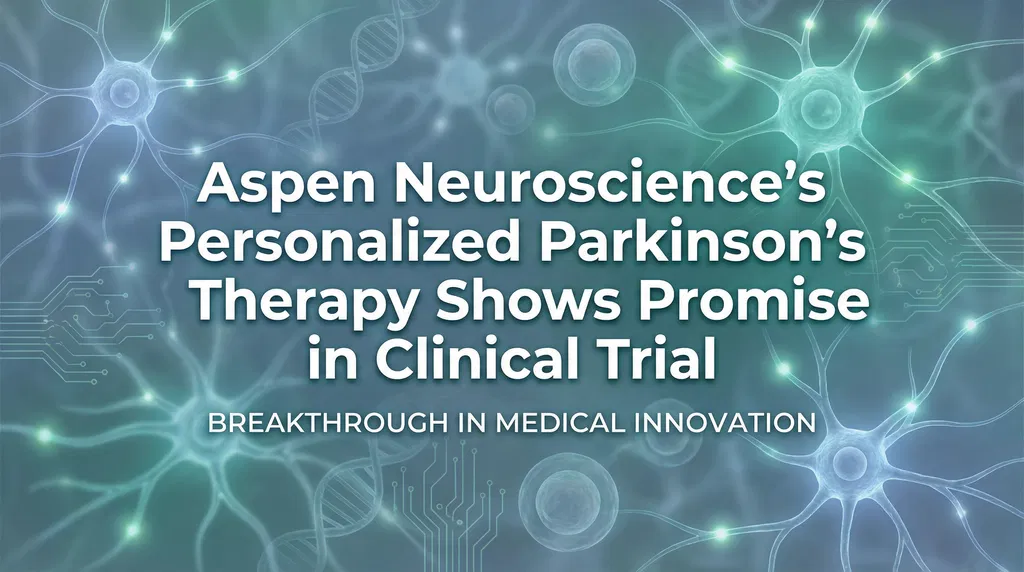Are you considering stem cell therapy but feeling overwhelmed by conflicting information online? Have you invested thousands of dollars in regenerative treatments only to see disappointing results? Are you wondering why some patients experience remarkable healing while others see little to no improvement from the same procedures?
We recently discovered an eye-opening discussion with Dr. Joy Kong, a triple board-certified physician and leading expert in regenerative medicine, who reveals the five biggest mistakes patients make with stem cell therapy.
Her insights could be the difference between a successful treatment that transforms your health and a costly disappointment that leaves you questioning whether regenerative medicine actually works.
Dr. Kong’s credentials speak for themselves. As a UCLA-trained physician certified by the American Board of Psychiatry & Neurology, American Board of Addiction Medicine, and American Board of Anti-Aging & Regenerative Medicine, she has dedicated her career to advancing the field of regenerative medicine.
Her clinic, Chara Health in Los Angeles, has helped countless patients achieve remarkable results through evidence-based stem cell protocols.
What makes Dr. Kong’s perspective particularly valuable is her dual role as both a practicing clinician and researcher. She founded the American Academy of Integrative Cell Therapy, where she trains other physicians on safe and effective stem cell protocols. Her recognition as “Stem Cell Doctor of the Decade” by the International Association of Top Professionals reflects her standing in the field.
Today, we want to share her crucial insights about the common pitfalls that can sabotage your stem cell therapy results and, more importantly, how to avoid them to maximize your investment in regenerative medicine.
The Hidden Truth About Using Your Own Stem Cells
One of the most surprising revelations from Dr. Kong’s discussion is that using your own stem cells may not always be the ideal choice. This challenges the common assumption that autologous stem cell therapy (using your own cells) is automatically the safest and most effective option.
The logic behind using your own cells seems sound at first glance. There’s no risk of rejection, no concerns about compatibility, and no ethical issues surrounding the source of the cells. However, Dr. Kong explains that the quality and quantity of your own stem cells can vary dramatically based on your age, health status, and underlying medical conditions.
As we age, our stem cell populations naturally decline in both number and potency. The stem cells we have at 60 are not the same as those we had at 20. They may be less capable of differentiating into the specific cell types needed for repair, less responsive to growth signals, and more likely to carry genetic damage accumulated over decades of life.
For patients with chronic diseases, autoimmune conditions, or those who have undergone chemotherapy or radiation, their own stem cells may be compromised.
Using these cells for therapy could mean starting with a suboptimal healing resource. In some cases, the very conditions that brought patients to seek stem cell therapy may have also damaged their stem cell populations.
Dr. Kong’s clinical experience has shown that carefully screened donor stem cells from young, healthy individuals can sometimes provide superior therapeutic outcomes compared to a patient’s own aged or compromised cells.
This doesn’t mean autologous therapy is never appropriate, but rather that the decision should be based on individual circumstances rather than a blanket assumption that “your own is always best.”
The key is working with a knowledgeable physician who can assess the quality of your stem cells and recommend the most appropriate source for your specific condition and treatment goals. This might involve testing your stem cell function, considering your medical history, and evaluating the specific requirements of your treatment protocol.
The Dangers of Over-Expanded Laboratory-Grown Cells
Another critical mistake Dr. Kong highlights is the use of over-expanded stem cells that have been grown extensively in laboratory cultures. This practice has become increasingly common, particularly in overseas clinics that promise large numbers of stem cells at attractive prices.
The appeal of expanded cells is understandable. Starting with a small sample of stem cells and growing them in culture can theoretically produce millions of cells for treatment. This approach seems to offer more bang for your buck and the promise of more powerful therapeutic effects. However, the reality is far more complicated and potentially dangerous.
When stem cells are cultured extensively in laboratory conditions, they undergo significant changes that can compromise their therapeutic potential. Extended passaging (the process of repeatedly dividing cells in culture) can lead to genetic instability, loss of potency, and increased risk of malignant transformation. Essentially, the cells may look like stem cells under a microscope, but they may have lost many of the properties that make them therapeutically valuable.
The quality control standards for cell expansion vary dramatically between facilities. While reputable laboratories follow strict protocols to monitor cell health and genetic stability, some facilities, particularly those in countries with less stringent regulations, may prioritize quantity over quality. This can result in the production of cells that are not only ineffective but potentially harmful.
Dr. Kong emphasizes that the number of stem cells used in treatment is not necessarily correlated with better outcomes. A smaller number of high-quality, minimally manipulated cells can often produce superior results compared to large numbers of over-expanded, compromised cells. This is why many leading regenerative medicine practitioners prefer to use minimally manipulated stem cells that retain their natural properties and therapeutic potential.
The overseas clinic phenomenon deserves particular attention. While some international facilities maintain excellent standards, others may operate with less oversight and different safety protocols. Patients attracted by lower costs and promises of miracle cures may unknowingly receive inferior or dangerous cell preparations. The lack of regulatory oversight in some countries means that patients have little recourse if something goes wrong.
When considering stem cell therapy, it’s crucial to understand the source and processing methods used for the cells you’ll receive. Ask detailed questions about cell expansion protocols, quality control measures, and the facility’s track record. Remember that in regenerative medicine, as in many areas of healthcare, the cheapest option is rarely the best option.
How Lifestyle Habits Can Sabotage Your Results
Perhaps the most controllable factor affecting stem cell therapy outcomes is your lifestyle, yet it’s often the most overlooked aspect of treatment planning. Dr. Kong identifies several lifestyle habits that can significantly undermine the effectiveness of your regenerative treatment, turning a potentially transformative therapy into a disappointing waste of time and money.
Overexertion immediately following stem cell therapy is one of the most common mistakes patients make. The enthusiasm to test their newly treated joints or return to normal activities can actually interfere with the healing process. Stem cells need time to integrate into damaged tissues, differentiate into the appropriate cell types, and begin the complex process of tissue repair.
When you engage in excessive physical activity too soon after treatment, you create an inflammatory environment that can disrupt stem cell function. The mechanical stress on newly treated tissues can damage the delicate cellular structures that stem cells are trying to repair. This doesn’t mean you should be completely sedentary, but rather that you need to follow a carefully planned rehabilitation protocol that allows for optimal healing.
The alcohol consumption factor is particularly important and often underestimated by patients. Alcohol has multiple negative effects on stem cell function and the healing process. It can impair stem cell migration to injury sites, reduce their ability to differentiate into needed cell types, and create systemic inflammation that interferes with regenerative processes.
Even moderate alcohol consumption can affect stem cell therapy outcomes. The liver’s processing of alcohol produces toxic byproducts that can damage stem cells and interfere with the growth factors they produce. Additionally, alcohol can disrupt sleep patterns, which are crucial for the natural healing processes that support stem cell therapy.
Poor dietary choices represent another major obstacle to successful stem cell therapy. Your body needs specific nutrients to support stem cell function, tissue repair, and the production of new cellular structures. A diet high in processed foods, sugar, and inflammatory compounds can create an environment that’s hostile to regenerative healing.
Conversely, a diet rich in anti-inflammatory foods, antioxidants, and specific nutrients can significantly enhance stem cell therapy outcomes. Omega-3 fatty acids, vitamin D, vitamin C, and various polyphenols found in colorful fruits and vegetables can support stem cell function and create an optimal healing environment.
The timing of dietary changes is also important. Starting an anti-inflammatory diet several weeks before stem cell therapy can help prepare your body for optimal healing. Continuing this dietary approach for months after treatment can support the long-term regenerative processes that determine your ultimate outcomes.
Sleep quality is another lifestyle factor that profoundly affects stem cell therapy results. During deep sleep, your body produces growth hormone and other factors that support stem cell function and tissue repair. Chronic sleep deprivation can impair these processes and reduce the effectiveness of your treatment.
Stress management also plays a crucial role in stem cell therapy success. Chronic stress elevates cortisol levels, which can suppress stem cell function and create systemic inflammation. Patients who incorporate stress reduction techniques like meditation, yoga, or regular relaxation practices often see better outcomes from their regenerative treatments.
The Critical Importance of Proper Patient Selection
Dr. Kong’s expertise reveals that not every patient is an ideal candidate for stem cell therapy, and proper patient selection is crucial for achieving successful outcomes. This is an area where many clinics fall short, either due to financial incentives or lack of comprehensive evaluation protocols.
Age considerations play a significant role in treatment planning. While stem cell therapy can benefit patients across a wide age range, the approach may need to be modified based on the patient’s age and overall health status. Younger patients typically have more robust stem cell populations and better healing capacity, while older patients may require different protocols or combination therapies to achieve optimal results.
Disease severity is another critical factor in patient selection. Stem cell therapy works best when there’s still viable tissue to repair and regenerate. In cases where damage is too extensive or where the underlying disease process is too aggressive, stem cell therapy alone may not be sufficient. These patients might benefit from combination approaches or may need to address underlying health issues before pursuing regenerative treatment.
Underlying health conditions can significantly impact stem cell therapy outcomes. Patients with uncontrolled diabetes, autoimmune diseases, or chronic infections may not respond as well to treatment. In some cases, addressing these underlying conditions first can dramatically improve the chances of successful stem cell therapy.
The psychological readiness of patients is often overlooked but equally important. Stem cell therapy requires patience, as results often develop gradually over months rather than days or weeks. Patients who expect immediate, dramatic improvements may become discouraged and discontinue supportive therapies that are crucial for long-term success.
Realistic expectations are essential for patient satisfaction and treatment success. While stem cell therapy can produce remarkable results, it’s not a miracle cure that works for everyone or every condition. Patients need to understand the likelihood of success for their specific condition, the timeline for seeing results, and the importance of their role in the healing process.
Understanding the Science Behind Treatment Failures
To truly appreciate why these mistakes can sabotage stem cell therapy results, it’s important to understand the complex biological processes involved in regenerative healing. Dr. Kong’s scientific background provides valuable insights into why seemingly small factors can have such significant impacts on treatment outcomes.
Stem cell homing is the process by which injected stem cells migrate to sites of injury or damage. This process depends on chemical signals released by damaged tissues and the ability of stem cells to respond to these signals. Factors like inflammation, blood flow, and the local tissue environment can all affect stem cell homing efficiency.
When patients engage in behaviors that create excessive inflammation or compromise blood flow, they can interfere with this crucial homing process. This means that even high-quality stem cells may not reach their intended targets, resulting in poor treatment outcomes despite using excellent cellular material.
Cell survival and integration represent another critical phase of stem cell therapy. Once stem cells reach their target tissues, they must survive in the local environment and integrate with existing cellular structures. This process can be disrupted by factors like oxidative stress, poor nutrition, and inflammatory conditions created by lifestyle choices.
The paracrine effects of stem cells are often more important than their direct differentiation into new tissue cells. Stem cells release a complex mixture of growth factors, cytokines, and other signaling molecules that stimulate the body’s natural healing processes. These paracrine effects can be enhanced or inhibited by the patient’s overall health status and lifestyle choices.
Tissue remodeling is the final phase of regenerative healing, where new cellular structures are organized into functional tissue. This process can take months to complete and requires ongoing support from proper nutrition, appropriate physical activity, and a healthy inflammatory balance. Patients who don’t maintain supportive lifestyle practices during this critical period may see their initial improvements fade over time.
The Role of Clinic Selection in Treatment Success
Dr. Kong’s insights also highlight the critical importance of choosing the right clinic and practitioner for your stem cell therapy. The field of regenerative medicine is rapidly evolving, and the quality of care can vary dramatically between providers.
Physician expertise is perhaps the most important factor in clinic selection. Look for practitioners who have specialized training in regenerative medicine, extensive experience with stem cell therapies, and a track record of successful outcomes. Board certification in relevant specialties and ongoing education in the field are important indicators of competence.
Facility standards should meet or exceed those required for surgical procedures. Stem cell processing requires sophisticated laboratory facilities, strict sterile techniques, and comprehensive quality control measures. The clinic should be able to provide detailed information about their processing protocols and safety measures.
Treatment protocols should be based on scientific evidence and established best practices. Be wary of clinics that promise unrealistic results, use unproven techniques, or pressure you into immediate treatment decisions. Reputable practitioners will take time to evaluate your condition thoroughly and explain the rationale behind their recommended approach.
Follow-up care is an often-overlooked aspect of stem cell therapy that can significantly impact outcomes. The best clinics provide comprehensive post-treatment support, including rehabilitation protocols, lifestyle guidance, and ongoing monitoring of your progress. This support is crucial for maximizing the benefits of your treatment.
Transparency about costs, risks, and expected outcomes is essential. Reputable clinics will provide detailed information about all aspects of your treatment, including potential complications and realistic timelines for seeing results. They should also be willing to provide references from previous patients and data on their success rates.
Optimizing Your Body for Stem Cell Therapy Success
Understanding what to avoid is only half the equation. Dr. Kong’s approach emphasizes the importance of optimizing your body’s healing environment before, during, and after stem cell therapy to maximize your chances of success.
Pre-treatment preparation can significantly impact your outcomes. This might include addressing nutritional deficiencies, optimizing your inflammatory status, and ensuring that any underlying health conditions are well-controlled. Some patients benefit from a period of “prehabilitation” that prepares their bodies for the healing process.
Nutritional optimization involves more than just eating a healthy diet. Specific nutrients play crucial roles in stem cell function and tissue repair. Vitamin D, omega-3 fatty acids, vitamin C, and various antioxidants can all support the regenerative process. Some patients may benefit from targeted supplementation based on their individual needs and deficiencies.
Exercise protocols need to be carefully planned to support healing without interfering with the regenerative process. The right amount and type of physical activity can enhance blood flow, reduce inflammation, and support tissue remodeling. However, too much activity too soon can be counterproductive.
Sleep optimization is crucial for stem cell therapy success. During deep sleep, your body produces growth hormone and other factors that support healing. Patients should prioritize sleep hygiene and address any sleep disorders before undergoing treatment.
Stress management techniques can significantly impact treatment outcomes. Chronic stress suppresses immune function and creates inflammatory conditions that interfere with healing. Incorporating stress reduction practices into your daily routine can support the regenerative process.
The Future of Personalized Regenerative Medicine
Dr. Kong’s work represents the cutting edge of personalized regenerative medicine, where treatments are customized based on individual patient characteristics, needs, and circumstances. This approach recognizes that there’s no one-size-fits-all solution in stem cell therapy.
Genetic testing is beginning to play a role in treatment planning, helping practitioners understand how individual patients might respond to different types of stem cell therapy. This information can guide decisions about cell sources, treatment protocols, and supportive therapies.
Biomarker analysis can provide insights into a patient’s inflammatory status, healing capacity, and overall health. This information can be used to optimize treatment timing and identify patients who might benefit from additional supportive therapies.
Advanced imaging techniques are improving our ability to monitor stem cell therapy outcomes and adjust treatment protocols as needed. This allows for more precise evaluation of treatment effectiveness and earlier intervention if adjustments are needed.
Combination therapies that integrate stem cell therapy with other regenerative approaches are showing promise for treating complex conditions. These might include combining stem cells with platelet-rich plasma, growth factors, or tissue engineering approaches.
Making Informed Decisions About Your Treatment
Armed with Dr. Kong’s insights about what to avoid, you’re better equipped to make informed decisions about stem cell therapy. The key is to approach regenerative medicine as an educated consumer who understands both the potential benefits and the factors that can influence outcomes.
Research your options thoroughly before committing to any treatment. This includes understanding the different types of stem cell therapy available, the evidence supporting their use for your specific condition, and the qualifications of potential providers.
Ask detailed questions about every aspect of your proposed treatment. This includes the source and processing of stem cells, the specific protocols that will be used, expected timelines for results, and the clinic’s success rates for your condition.
Consider the total cost of treatment, including not just the initial procedure but also any required follow-up care, supportive therapies, and potential additional treatments. The cheapest option is rarely the best value in regenerative medicine.
Prepare for success by optimizing your health and lifestyle before treatment. This investment in your overall well-being can significantly improve your chances of achieving the results you’re hoping for.
Commit to the process of healing, understanding that stem cell therapy is not a quick fix but rather a catalyst for your body’s natural regenerative processes. Your active participation in the healing process is crucial for achieving optimal outcomes.
Dr. Joy Kong’s expertise provides a roadmap for avoiding the common pitfalls that can sabotage stem cell therapy results. By understanding these critical mistakes and taking steps to avoid them, you can maximize your investment in regenerative medicine and increase your chances of achieving the healing and improved quality of life you’re seeking.
The field of regenerative medicine continues to evolve rapidly, offering new hope for patients with conditions that were previously considered untreatable. However, success in this field requires more than just advanced technology and high-quality stem cells. It requires a comprehensive approach that considers every factor that can influence healing, from the quality of the cells used to the lifestyle choices you make during recovery.
By avoiding the five critical mistakes Dr. Kong identifies and working with qualified practitioners who understand the complexities of regenerative medicine, you can give yourself the best possible chance of experiencing the transformative benefits that stem cell therapy can provide. Remember that your journey to healing is a partnership between you and your medical team, and your active participation in the process is just as important as the advanced therapies you receive.



